Airbus A320
The Airbus A320 family are narrow-body airliners developed and produced by Airbus. The A320 was launched in March 1984, first flew on 22 February 1987, and was introduced in April 1988 by Air France. The first member of the family was followed by the longer A321 (first delivered in January 1994), the shorter A319 (April 1996), and the even shorter A318 (July 2003). Final assembly takes place in Toulouse in France; Hamburg in Germany; Tianjin in China since 2009; and in Mobile, Alabama in the United States since April 2016.
The twinjet has a six-abreast cross-section and is powered by either CFM56 or IAE V2500 turbofans, except the CFM56/PW6000 powered A318. The family pioneered the use of digital fly-by-wire and side-stick flight controls in airliners. Variants offer maximum take-off weights from 68 to 93.5 t (150,000 to 206,000 lb), to cover a 5,740–6,940 km (3,100–3,750 nmi) range. The 31.4 m (103 ft) long A318 typically accommodates 107 to 132 passengers. The 124-156 seat A319 is 33.8 m (111 ft) long. The A320 is 37.6 m (123 ft) long and can accommodate 150 to 186 passengers. The 44.5 m (146 ft) A321 offers 185 to 230 seats. The Airbus Corporate Jets are business jet versions.
In December 2010, Airbus announced the re-engined A320neo (new engine option), which entered service with Lufthansa in January 2016. With more efficient turbofans and improvements including sharklets, it offers up to 15% better fuel economy. Earlier A320s are now called A320ceo (current engine option).
American Airlines is the largest A320 operator with 452 aeroplanes in its fleet.[b] In October 2019, the A320 family surpassed the Boeing 737 to become the highest-selling airliner. As of March 2022, a total of 16,106 A320s had been ordered and 10,285 delivered, of which 9,661 aircraft were in service with more than 340 operators. The global A320 fleet had completed more than 155 million flights over 286 million block hours since its entry into service. The A320ceo initially competed with the 737 Classic and the MD-80, then their successors, the 737 Next Generation and the MD-90, while the 737 MAX is Boeing's response to the A320neo.
Controls
Activator 1: Arm Speed Brakes
Activator 2: Wing Light
Activator 3: Landing Light
Activator 4: Cabin light
Activator 5: Open door (All doors can opened if you connect it with Rotator)
Activator 6: Pushback
Activator 8: Power Unit( Deactivating 8 will cut all Powers)
Trim: Trim
VTOL: Flaps
How to Fly?
Take off
Take off speed: 200-250mph
Flaps: 50%
Trim: Standby
You must Active 2 and 3 for Safety
Landing
Approach speed: 150-120mph
VTOL(flaps): 100%
Trim: 25-50%
Gear: down
AG1: Activated(helps negate bouncy landings)
Cruise:
Cruise speed: mach.0.78(447 knots)-TAS
Max operating speed: Mach 0.82(470 knots) - TAS
optional:
No more than 250 knots below 10,000ft - IAS as per regulations
In flight
Enjoy the Flight
;D
Airline Info
History of Thai Airways
Thai Airways International, the national carrier of Thailand, was founded in 1960 as a joint venture between Thailand's domestic airline, Thai Airways Company (TAC), and Scandinavian Airlines System (SAS), with SAS providing expertise in exchange for a 30% share. Thai Airways began operations primarily as an international airline, connecting Thailand to Europe and other parts of the world.
Over time, the Thai government bought out SAS’s share, and by 1977, Thai Airways became fully state-owned. It merged with TAC in 1988, expanding its operations to include both domestic and international flights. Since then, Thai Airways has grown into one of Southeast Asia’s leading airlines, known for its service, fleet, and extensive route network. The airline's signature purple and gold color scheme reflects Thai royalty and national pride.
Thai Airways is a member of Star Alliance, which has helped it expand its global presence. Despite facing financial challenges in recent years, including a restructuring process during the COVID-19 pandemic, Thai Airways continues to be a significant player in the aviation industry, promoting Thai hospitality and culture to the world.
History of BNK48
BNK48 is a Thai idol group formed in 2017 as a sister group to Japan's popular AKB48. The group follows the AKB48 concept of having a large rotating roster of members who perform in various teams, making it possible to hold frequent live performances and fan events. The "48" concept was built around the idea of having idols that fans can meet regularly, fostering a close connection between fans and idols.
BNK48 quickly gained popularity in Thailand, especially with their breakout hit, "Koisuru Fortune Cookie" (translated to Thai as "Khukki Siangthai"), which became a viral sensation. BNK48 is unique in that it mixes J-pop idol culture with Thai cultural elements, attracting a wide fan base from both young fans and older generations.
The group’s activities range from concerts and variety shows to endorsements and product collaborations. Members of BNK48 are known for their accessibility to fans through events like handshake meetings, creating a more intimate and personal connection.
BNK48 and Thai Airways
Though no official collaboration has occurred between BNK48 and Thai Airways yet, both represent strong symbols of Thai culture in their respective industries. Thai Airways promotes Thailand’s heritage and hospitality on an international scale, while BNK48 connects with Thai youth culture, mixing local and Japanese influences. If they were to collaborate, it would likely fuse traditional and modern Thai elements, creating a powerful cultural statement for Thailand both locally and internationally.
Specifications
Spotlights
- LeShunny 5 months ago
- OPPOFindN5SP 5 months ago
- tonplam356 5 months ago
General Characteristics
- Predecessor Airbus A320 Neo EasyJet Neo Livery
- Created On Android
- Wingspan 117.5ft (35.8m)
- Length 132.6ft (40.4m)
- Height 40.3ft (12.3m)
- Empty Weight N/A
- Loaded Weight 42,833lbs (19,428kg)
Performance
- Power/Weight Ratio 1.152
- Horse Power/Weight Ratio 0.07
- Wing Loading 27.3lbs/ft2 (133.1kg/m2)
- Wing Area 1,571.5ft2 (146.0m2)
- Drag Points 9048
Parts
- Number of Parts 479
- Control Surfaces 9
- Performance Cost 2,990

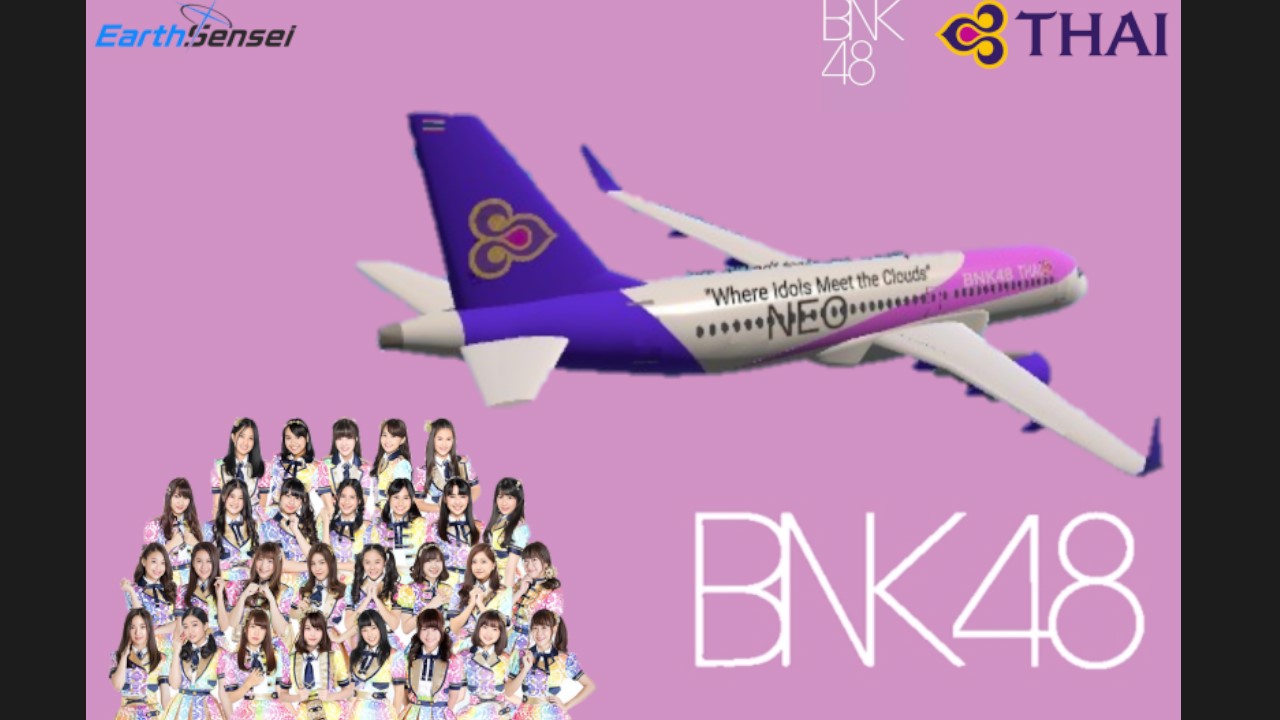
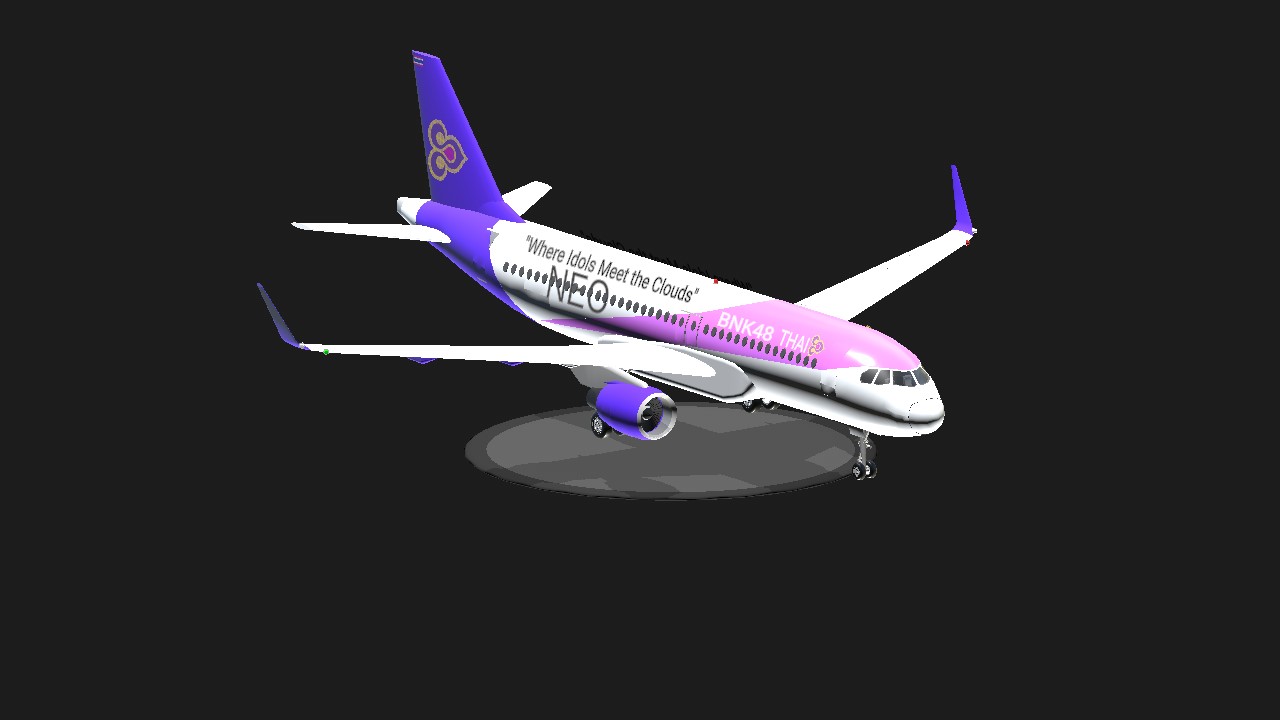
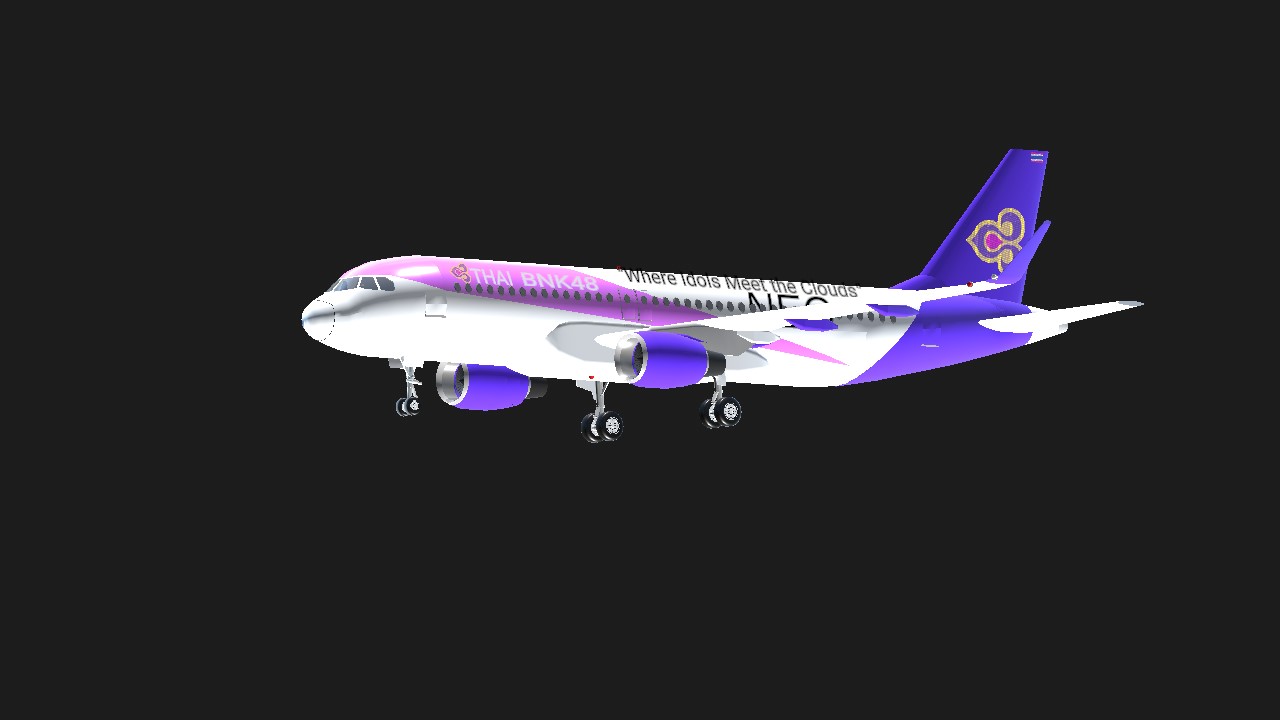
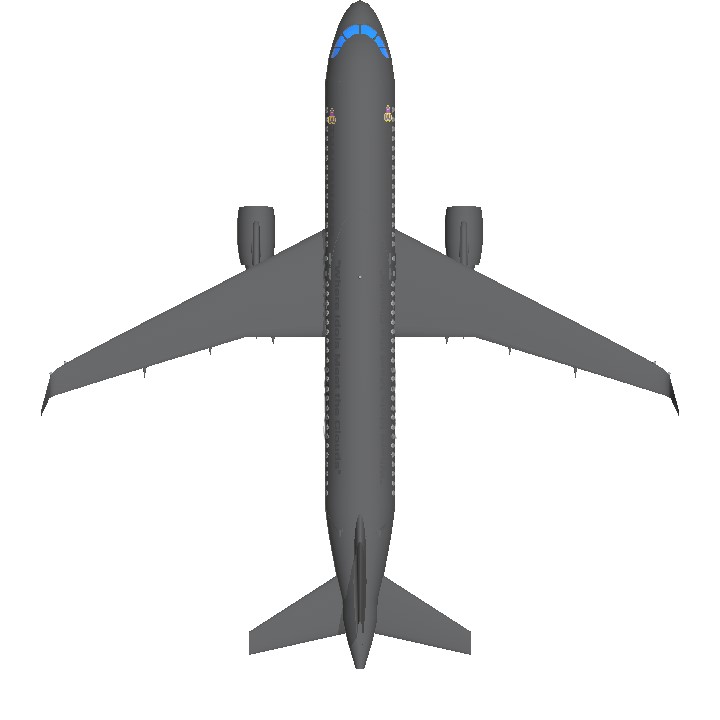
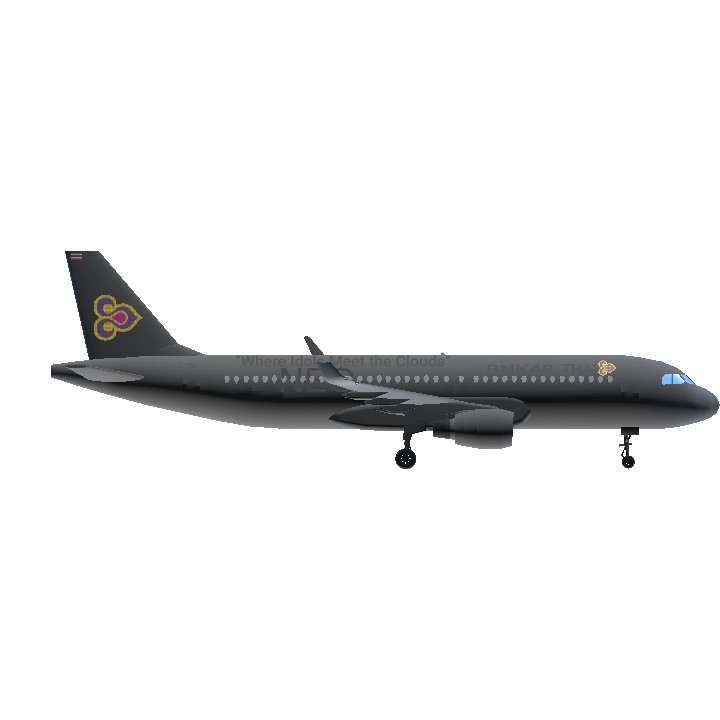
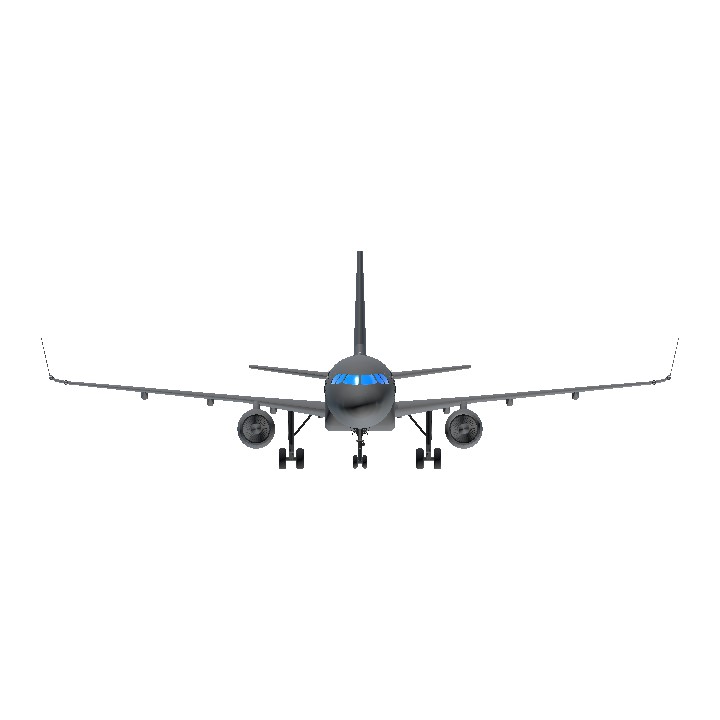
THAILAND MENTIONED🗣🗣🗣🔥🔥🔥🇹🇭🇹🇭🇹🇭🦅🦅🦅